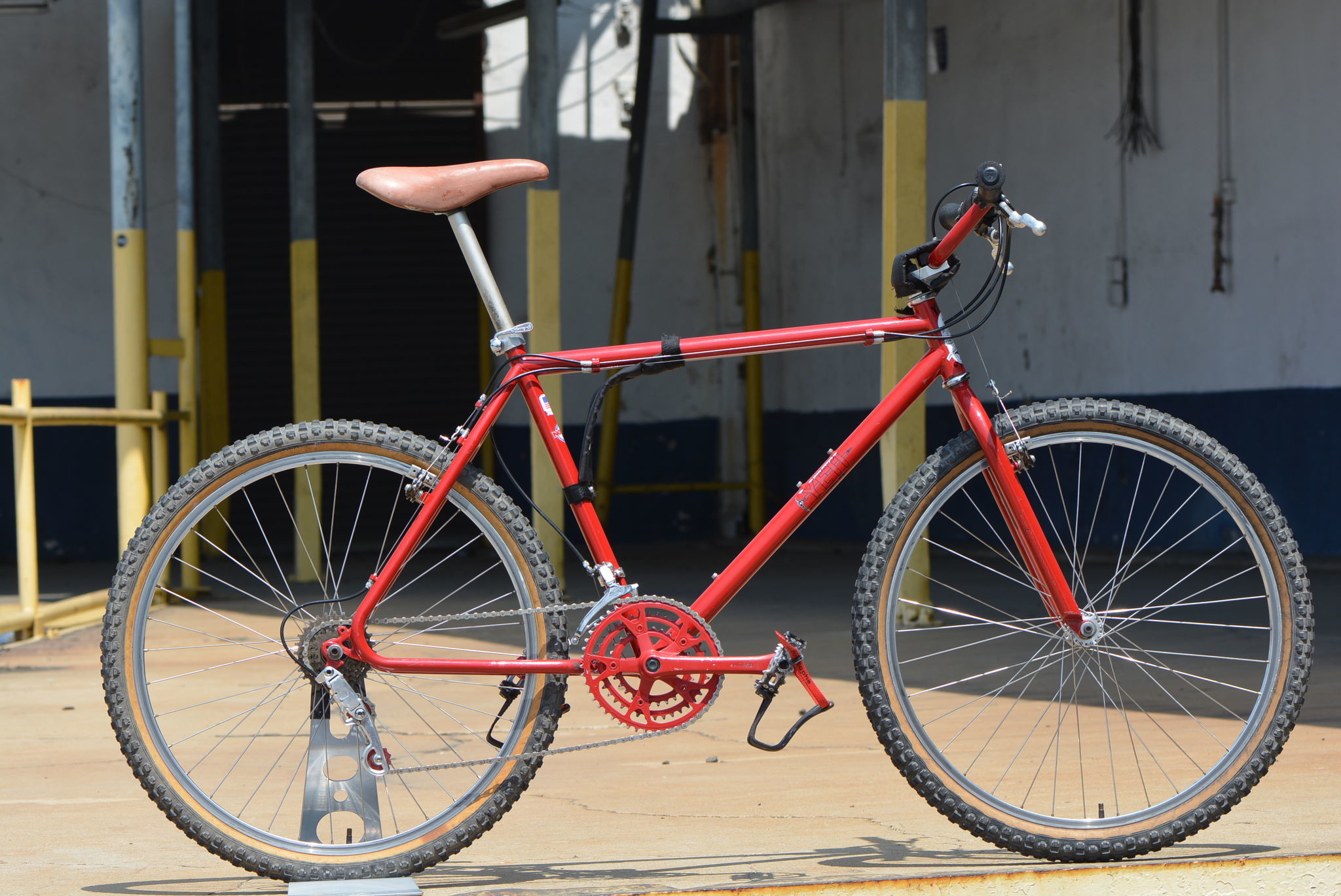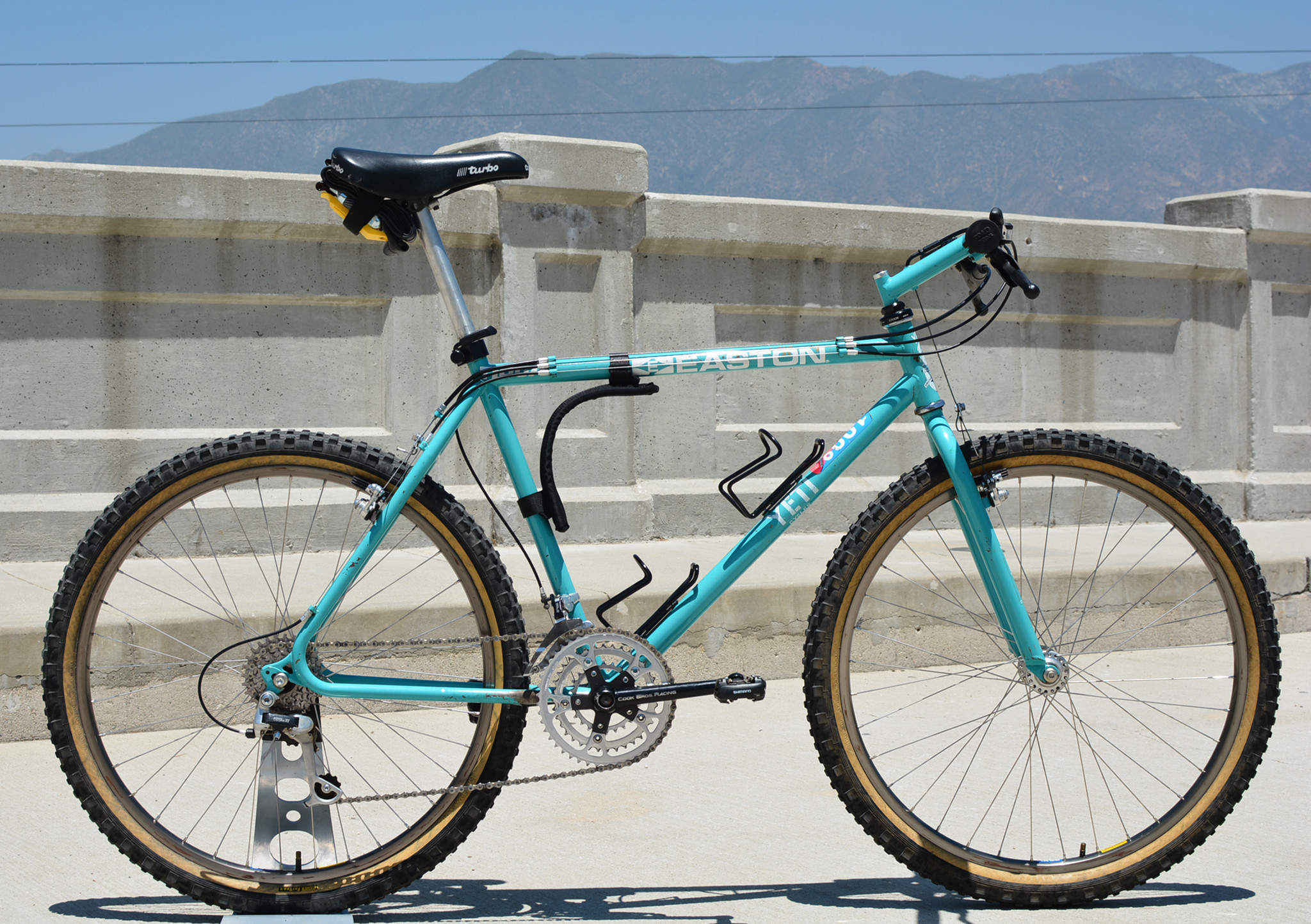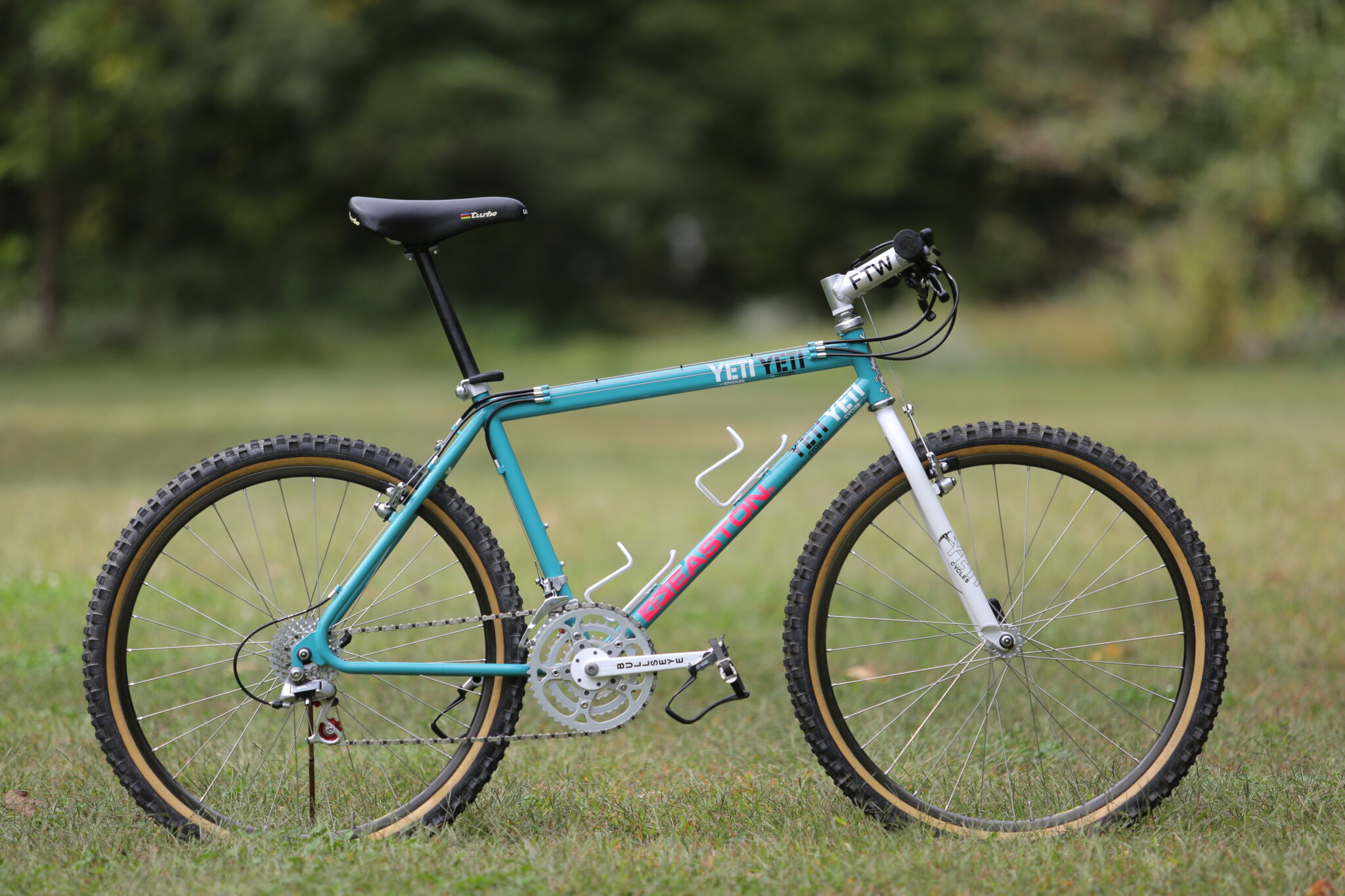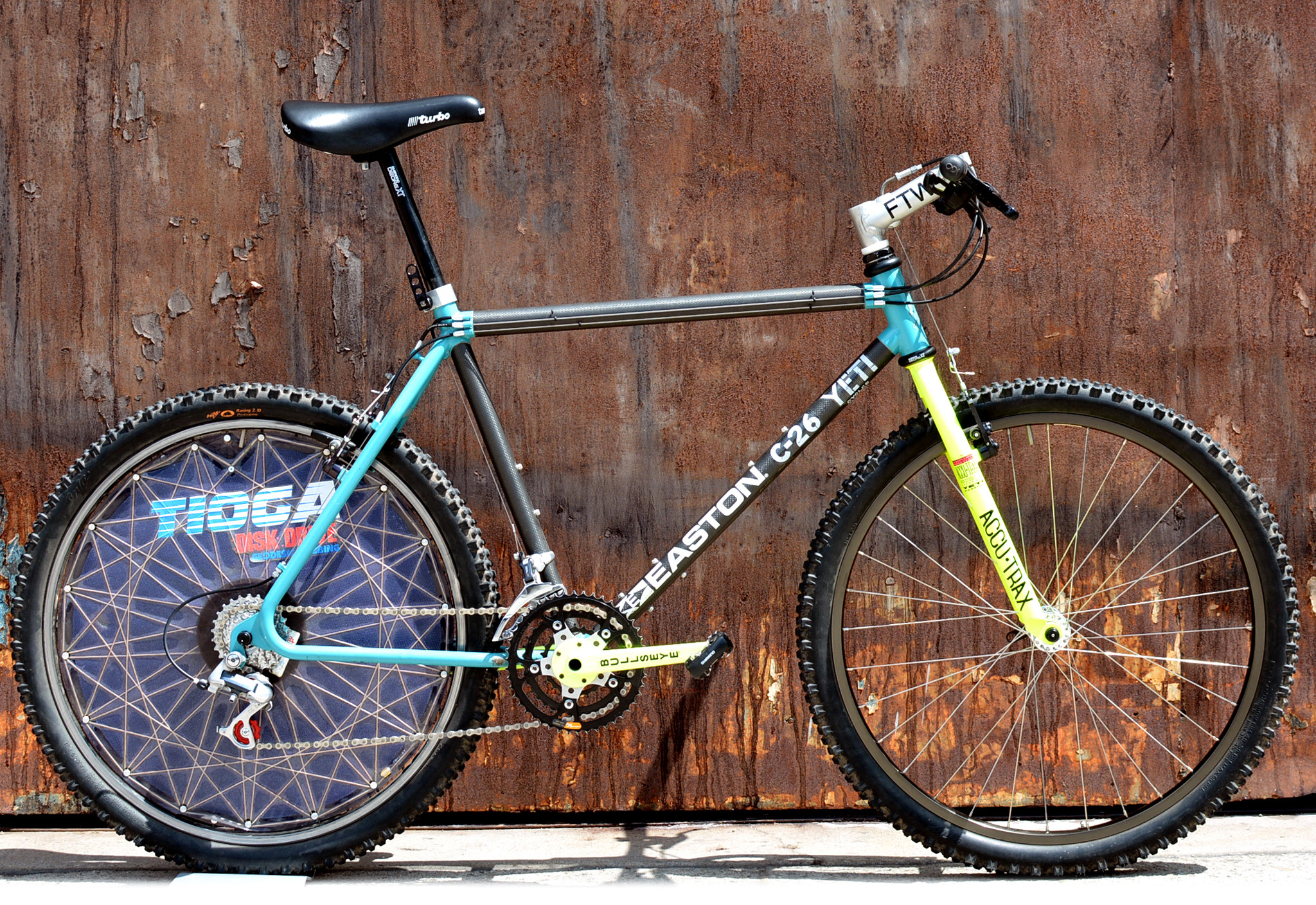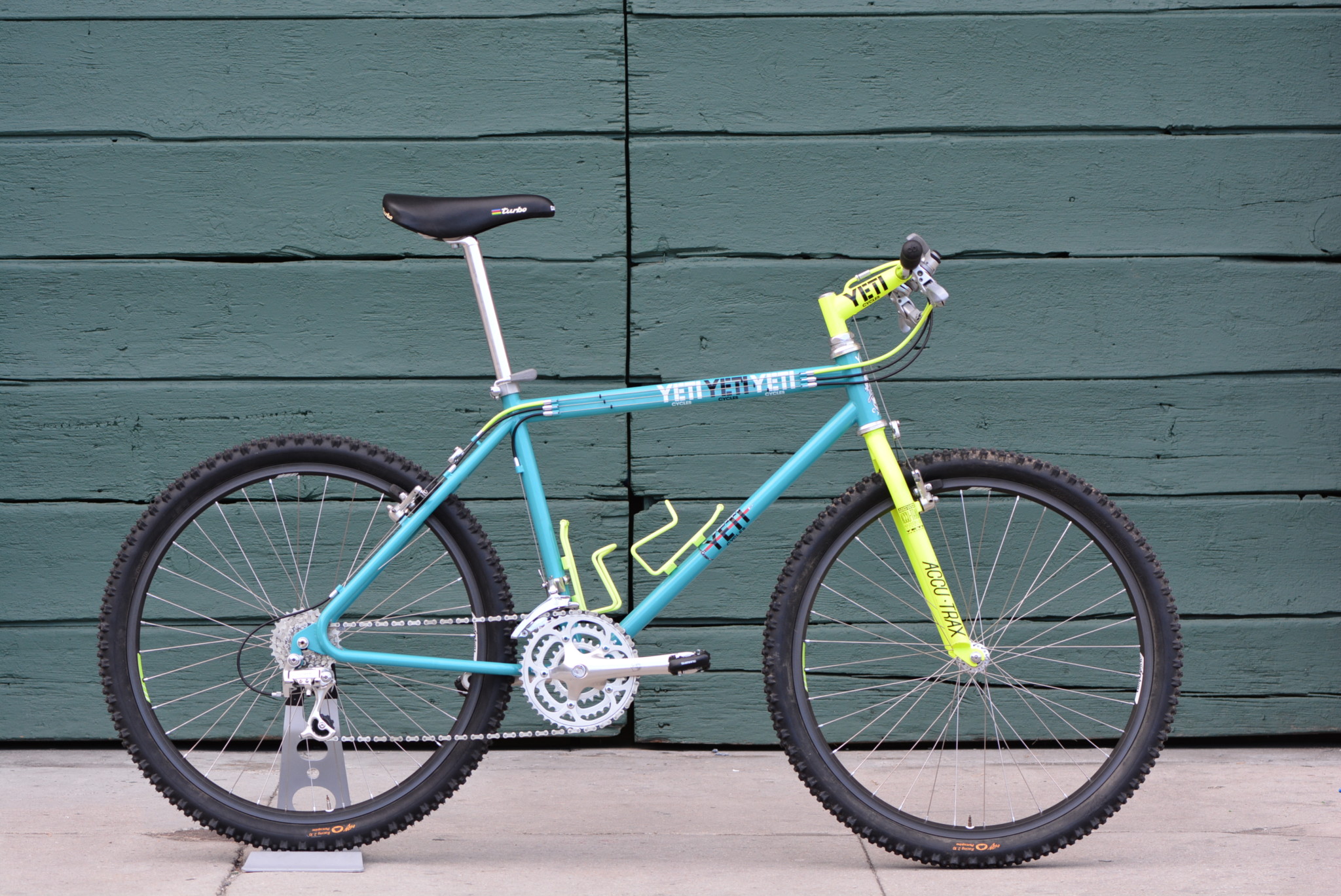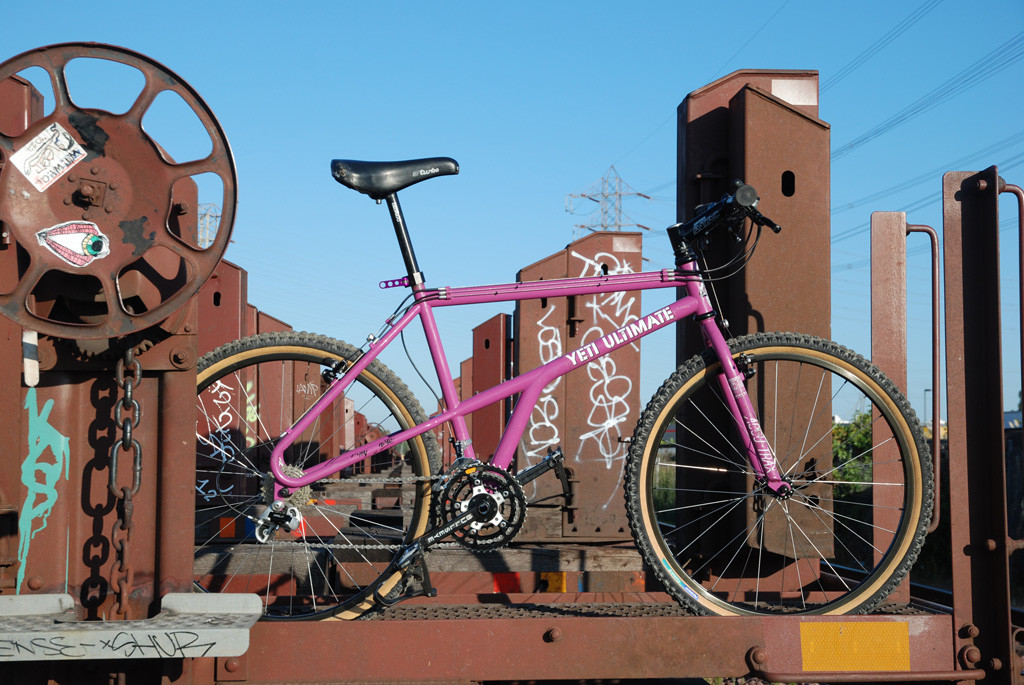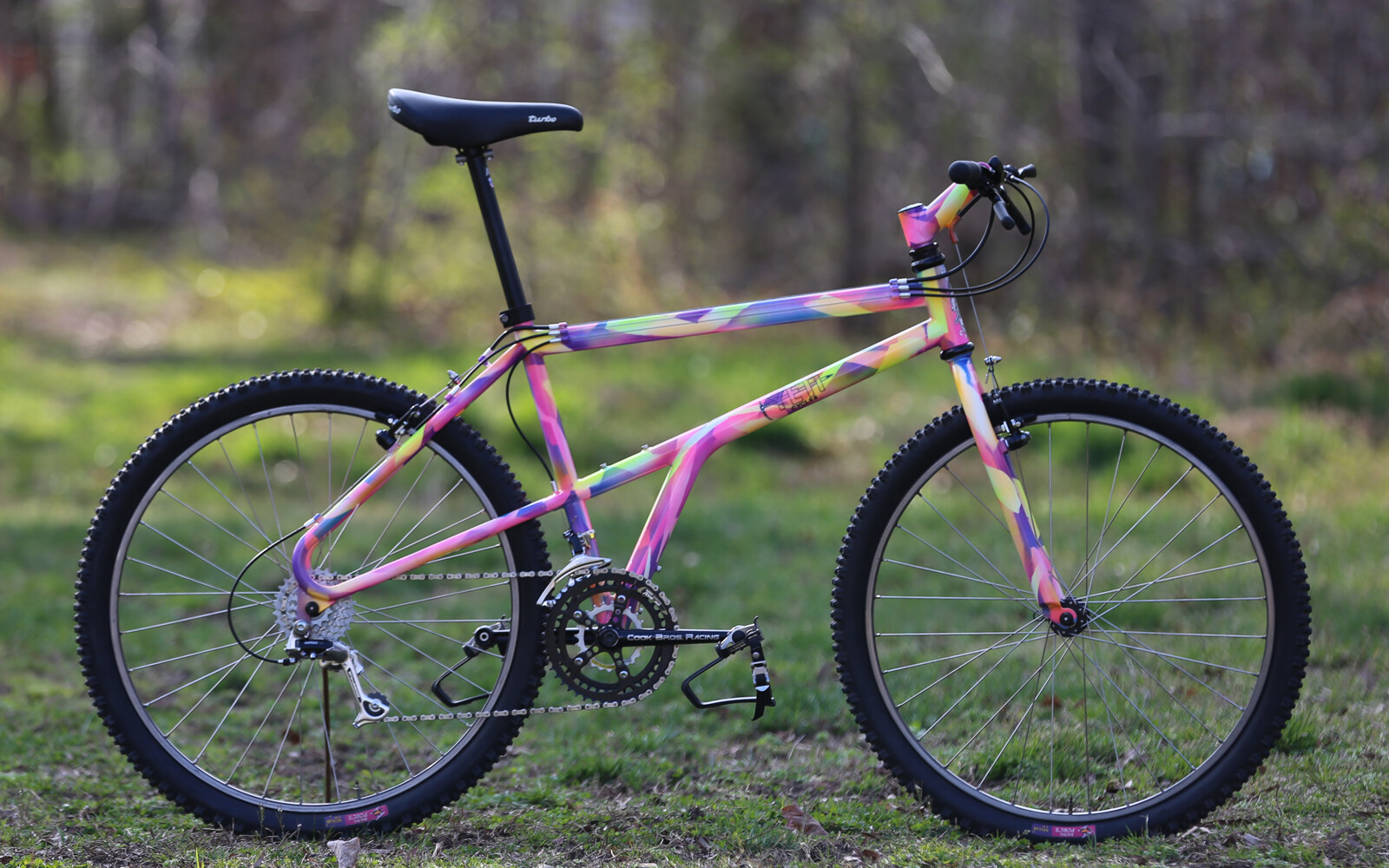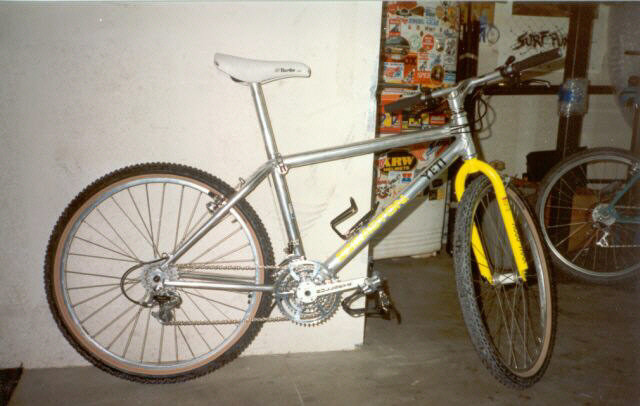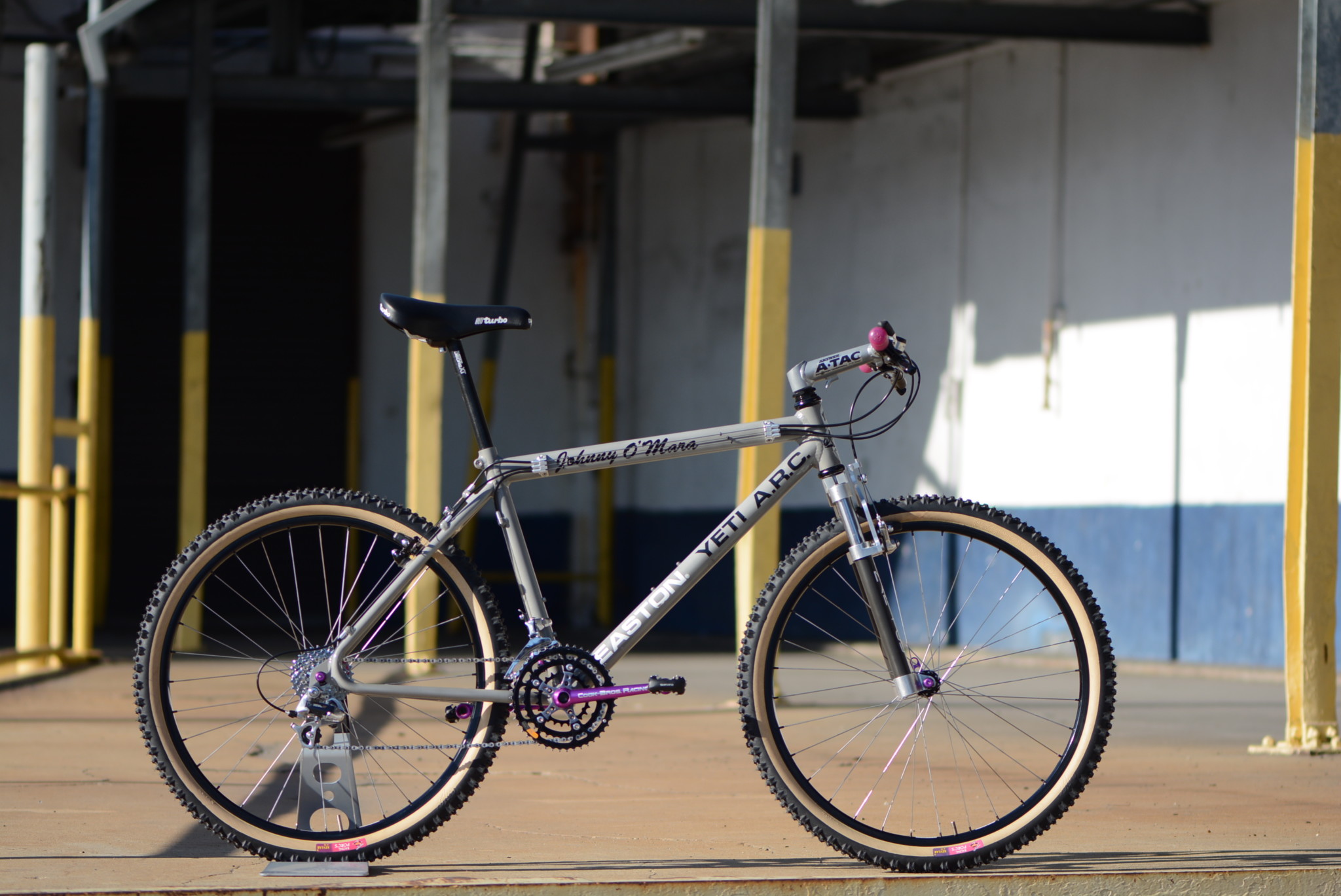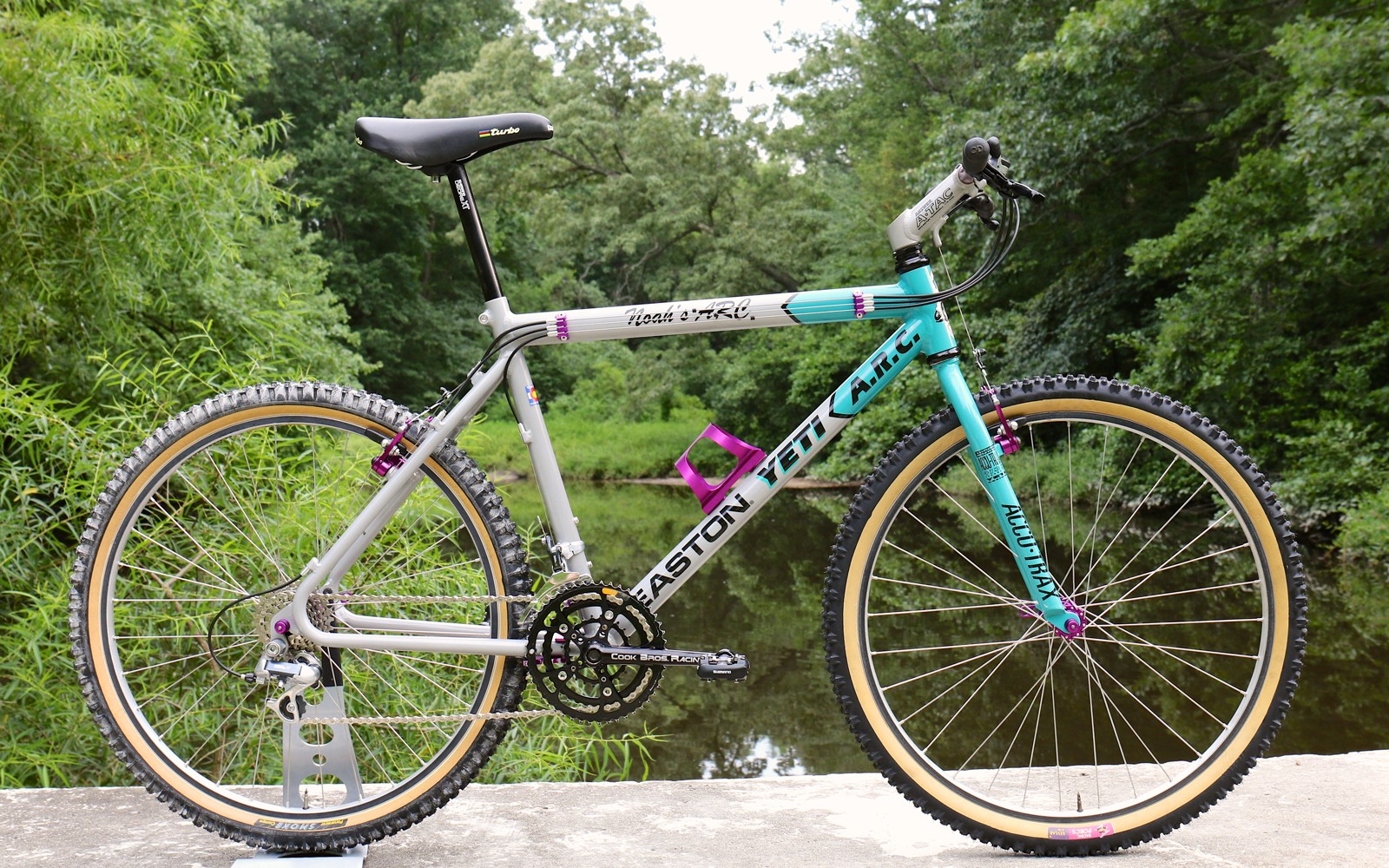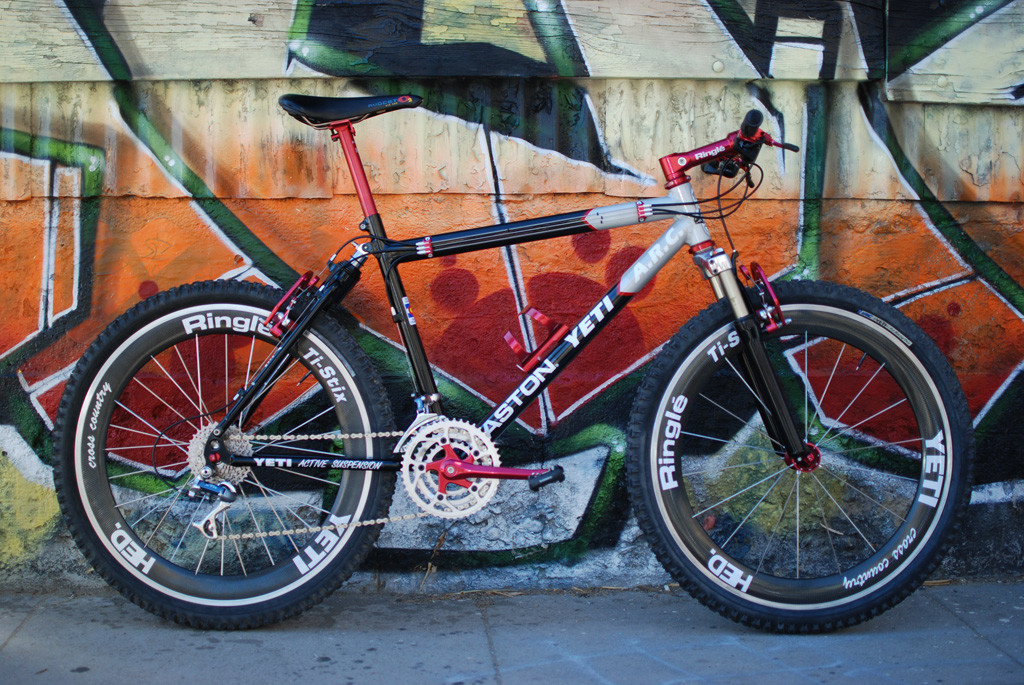Early Yeti History
Yeti cycles was founded in 1985 by John Parker in collaboration with Chris Hering who handled design and development and Frank the Welder who wielded the torch. Prior to starting up Yeti John worked in the special effects industry as well as for Bicycle Bob’s Sweetheart Cycles. John ended up acquiring Sweetheart and based his first bike the For Racing Only or F.R.O. on the Motocruiser. In fact some of the first Yetis built were in fact rebadged actual Sweetheart Cycles Motocruisers or built from left-over tubing.
Early Yeti History
Early Yeti history, a photo essay – Sweetheart Cycles Motocruiser years
Yeti history – 1985 & 86 Early California years
1987 Yeti FRO – Russel Woorley race bike
1985 Yeti #1
This bike is the origin of the species, the first bike ever sold under the Yeti banner. According to John this was one of the first 3-5 bikes he ever built and the first bike he ever sold under the Yeti brand, following his acquisition of the Sweetheart Cycles brand and tooling. I restored this bike several years ago and it now proudly lives at Yeti HQ in Colorado.
1986 Yeti F.R.O.
This Yeti F.R.O or For Racing Only was the 9th Yeti built and one of the early official Yeti race bikes. Although very similar to Yeti #1 it represents an evolutionary step in the design of the classic loop stay and went on to be the mainstay of Yeti production throughout the 80s.
1987-88 Yeti FRO
This 1987-88 Yeti FRO is a the more common version of the first generation of the design. Slightly evolved from the early bikes it features an ovalized top tube, alloy FTW stem and a host of go fast parts from Bullseye.
The Golden Years
The late 80s and early 90s were really a time of boom for Yeti. During that time Yeti refined the FRO, introduced the mind blowing C-26 carbon bike and the Ultimate elevated chainstay. In addition Yeti capped the decade by winning the inaugural World Championship with Juli Furtado piloting the C-26. Oh yeah, John Tomac also races for Yeti, with drop bars!
1989 C-26
The C-26 is one of the most if not THE most iconic vintage mountain bike. Though hardly the first carbon fiber bike on the market, or even the best the C-26 got top billing at the 1990 World Championships when John Tomac rode his bike with drop bars top two top finishes in the XC and DH and Juli Furtado won the women’s XC title aboard her C-26
1990 FRO - ex Joey Erwin Team Bike
Until the release of the A.R.C. in 1992 the F.R.O. was the longest running model over at Yeti. The FRO received some updates in 1990 (maybe as early as 89) including new dropouts, front derailleur cable routing and the new 1 1/4″ or Evolution headtube. The F.R.O. was replaced in 1991/92 by the Tange Prestige made PRO-F.R.O. which continued in production until 1995.
1991 Ultimate
The Yeti Ultimate was the created in 1989 as a result of a collaboration with Mountain Bike Action magazine to create The Ultimate mountain bike. Though not the first bike to feature elevated chainstays, Yeti managed to incorporate their trademark loop stays and organic curves in the downtube to create a truly remarkable bike. Although only made for a relatively short time, at least when compared to the F.R.O. and A.R.C., the Ultimate is one of the more iconic models in the classic Yeti lineup and is sought by collectors across the world.
1991 Yeti Ultimate
Another amazing Ultimate, this time with a one off paintjob by John Slawta as a tribute to the run of Yetis John painted in the late 80s.
The Alloy Era
The 1990s saw a massive pivot for Yeti with the introduction of the A.R.C. or Alloy Racing Composite frame in 1991. According to Parker he wanted to build Aluminum bikes before the introduction of the C-26 but he couldn’t get Easton to create an alloy that wouldn’t require the involved heat treatment process necessary to make bikes out of 6061. Seems that Easton came around eventually with the release of their 7005 series Vari Lite alloy and the Yeti A.R.C. was born. Initially Yeti only made in a hard tail version, which underwent extensive testing under Johnny O’Mara and raced on the World Cup circuit by Juli Furtado, but eventually a short travel AS or Active Suspension and a longer travel AS-LT models we released which saw wide success on the DH circuit with wins by Jimmy Deaton at the famous Mammoth Kamikaze and Myles Rockwell at the Reebok Eliminator races, not to mention multiple World Cup wins and bronze at the 93 world by Missy Giove aboard her ARC AS-LT.
Yeti ARC Development History
The Yeti A.R.C. was one of my childhood dream bikes and is one of the few bikes that delivered on that dream in full when I finally got one in 2009. The history of its development is one of the more interesting tales in the annals of mountain bike history.
1991 Prototype ARC - ex Juli Furtado race bike
Though somewhat conflicting in its origin the story goes that in 1990 Parker didn’t want Yeti to make an Aluminum bike. However when the cat’s away the mice will play and so when a shiny new Easton 7005 tubeset showed up at Yeti Frank the Welder (FTW) built it up. Upon his return Parker immediately fired him and it wasn’t until Zapata Espinoza saw the frame that he managed to convince Parker that this was the future and Frank was allowed to return to work. This is not that bike but one of the two FTW welded up next and more importantly it was the bike that Juli Furtado raced on for the first part of the 1991 WC season.
1992 A.R.C. - ex Jonny O'Mara race bike
While Juli was busy testing her first A.R.C., Frank and the team were busy taking in her input and refining the design. Juli ended up getting one more update to her A.R.C. toward the end of the 91 season and the lessons learned from that design were folded into what would become the pre-production version which received further testing with the like of Motocross legend Johnny O’Mara who was a long time Yeti factory test pilot.
1992 A.R.C.
The Yeti A.R.C. is one of the quintessential race bikes from the 1990s. When it was finally released to the public in 1992 it quickly became one of the most desirable bikes on the market. The combination of lightweight, race bred geometry and classic team livery the A.R.C. continues to be one of the most coveted vintage mountain bikes.
1996 A.R.C.-AS
Yeti’s first entry into the full suspension market was the 1993 A.R.C.-AS or Active Suspension. Though not a wildly successful bike from a sales perspective it was a popular sight on the professional race circuit dominating courses like Mammoth’s Kamikaze in the hands of Jimmy Deaton and Missy Giove.
Completed Projects:
Current Projects:
Newsletter sign up:
Subscribe to our newsletter to receive info on our latest projects and new podcast releases

